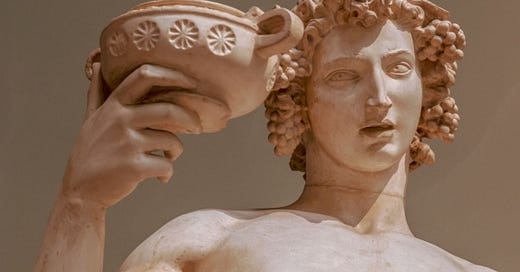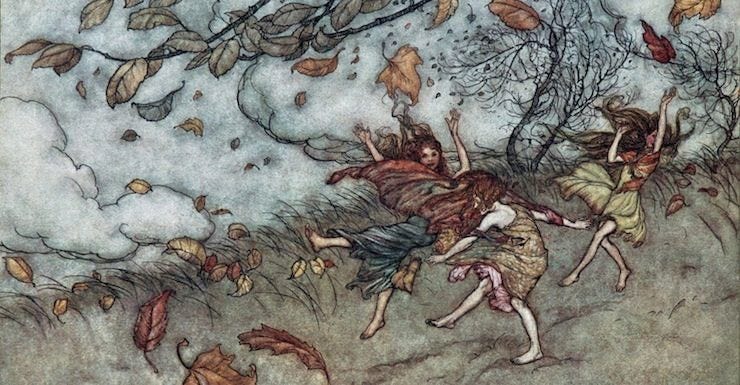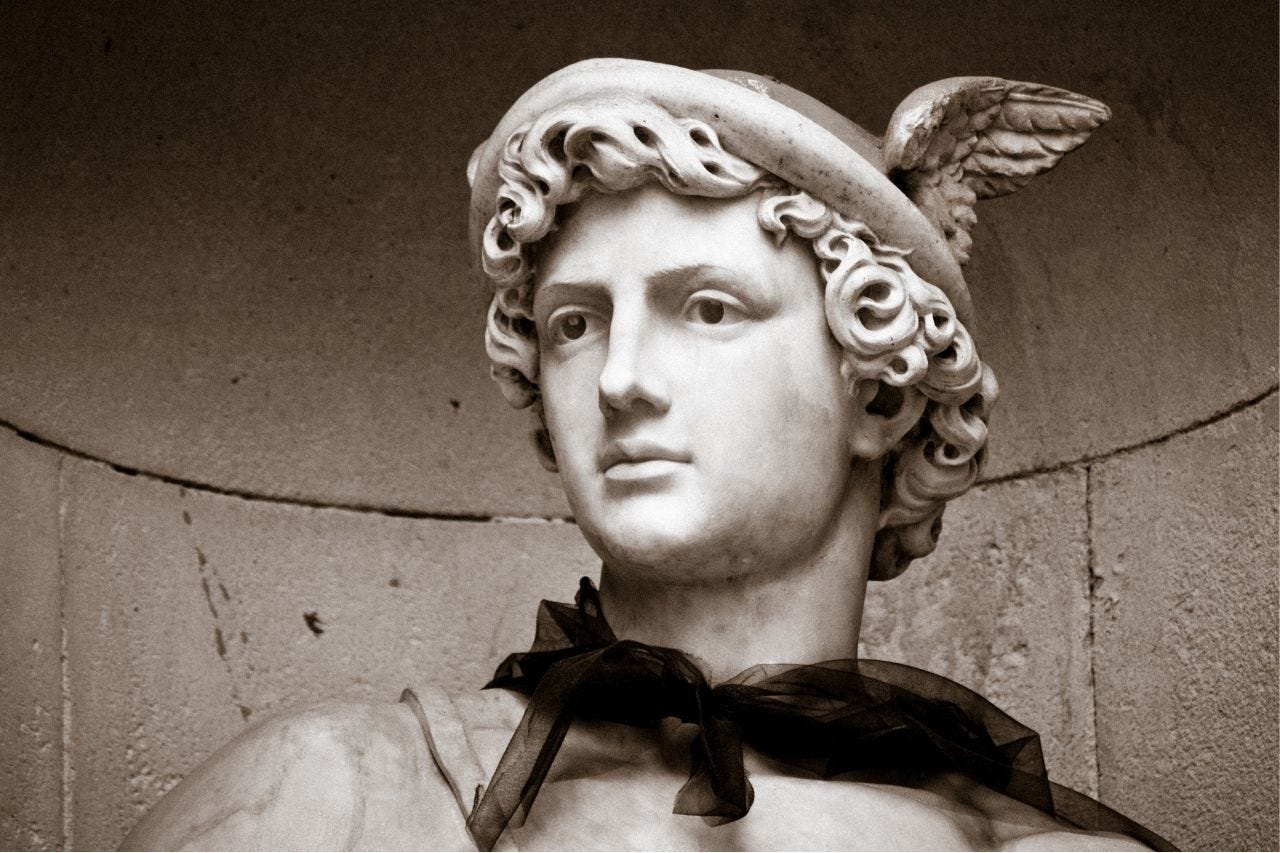When it comes to depth psychology and archetypal exploration, the interplay between the Puer Aeternus (eternal youth) and the Senex (wise elder) is often discussed as a central dynamic within the psyche. It ties directly to two sides of the Self, the archetype of wholeness. One of many dualities within the Self. As there is also the masculine and feminine, shadow and light, and many others.
When it comes to the Puer, with its boundless creativity, unbridled potential, and resistance to limits, this then contrasts with the Senex, representing discipline, wisdom, and the cycles of life-death. Together, they reflect the tension between youthful idealism and the deep wisdom of age. These archetypes are not only present in individual dynamics but also play out in how we guide, support, and influence others. So the way we approach even individuation itself. The journey to become ones authentic Self. However, this is only a fragment of the broader archetypal spectrum that informs the journey of individuation and healing.
When exploring the psychological dualities of the Self, the Puer-Senex axis is not alone, as I had said. Other archetypal energies, such as the Dionysian, Hermian, Artemisian, Freyian, Wotanic/Wolf-Apollonian, and Korybantic, also interact with and influence this polarity, shaping different aspects of personality, healing, and transformation. Each archetype in that way represent unique qualities of energy, focus, and orientation, which contribute to the individual's "centre of gravity" or dominant psychological blend. Not saying they are stuck to one particular blend, or can not act out other archetypal energies.
You can call it their natural expression, that they tend to prefer habitually, when authentic. As the expression of who we are is not just a sense of emptiness, as it is life that is being expressed in its own manner. As much as any tree is its own tree, and all part of the sense of tree, so this is such for the diversity of humans. It is that diversity of authentic expression that makes life beautiful.
The Puer Aeternus: The Spark of Inspiration
The Puer Aeternus archetype symbolises youthful energy, imagination, and boundless potential. It is the part of us that dreams of transcendence and refuses to settle for mediocrity. This archetype is often associated with people drawn to spiritual exploration, personal growth, and the search for meaning beyond societal norms. Carrying with it a Dionysian, Hermian or even Wolf-Apollonian energy. To give a few examples. However, the Puer in its shadow form, when wounded, can also be impulsive, detached from reality, and prone to escapism. When unchecked, it can manifest as ego-driven “manifestation” practices or the desire to bypass life’s challenges for immediate gratification.
This is the shadow of the Puer. The Puer often seeks freedom without structure, yet true spiritual growth requires integrating this energy with the grounded wisdom of the Senex. This is the combination of both transcendence and immanence. This shadow of the Puer connects to the victim-child archetype in the scapegoat complex, which connects to the wounded inner child. Which in Orphic myth is symbolised by the dismembered Dionysus. Where the titans, think Kronos, are the cause of this civilizational wounding. The Korybantes being key in bridging discipline and nurturing.
The Senex: The Weight of Wisdom
The Senex, in contrast, represents structure, discipline, and the wisdom of experience. It is the archetype that grounds us in reality, providing the frameworks and tools needed to navigate the complexities of life. And while the Senex can offer stability and maturity, its shadow emerges when it becomes rigid, controlling, or overly judgmental. The authoritarian teacher or the dogmatic guru reflects this shadow, turning wisdom into a subtle tool of repression rather than liberation. The shadow of the Senex is tied to the shadow father Kronos. The wounded masculine, who represses the inner child, and sees it as chaos. So it drives rigidity, and a Kronian mindset.
It is actually by holding space for others without imposing solutions, that it shows true wisdom. As it respects the autonomy of the individual. It is about recognizing that people must arrive at their own answers and that the role of a guide is not to dictate but to facilitate. That is the true Senex. Not the one who tries to redeem and fix.
The Archetypal Landscape and Healing
While the Puer-Senex dichotomy provides an essential framework for understanding psychological development, the healing process requires engagement with additional archetypal influences. Which embody different parts of the psyche and its relationship to life, nature, and the soul.
Dionysian Energy: The wild, ecstatic, and transformative force of Dionysus breaks down rigid structures and invites the person into states of chaos, creativity, and catharsis. This energy facilitates healing by confronting repressed emotions, dissolving false boundaries, and encouraging the liberation of the soul from societal constraints. This is the path of the Korybantes also, or of Nyx.
Hermian Energy: The archetype of Hermes represents communication, fluidity, and the bridge between worlds. Be it the conscious and unconscious, the spiritual and material, or the old and new. Healing influenced by Hermian energy often involves understanding and integrating polarities, finding the "middle path," and embracing the playfulness and adaptability of life.
Artemisian Energy: Artemis, the goddess of the wild and protector of the vulnerable, embodies independence, instinctual wisdom, and connection to nature. Her energy supports healing through reconnection with the primal, untouched aspects of the Self, fostering self-reliance and a fierce commitment to authenticity and inner truth. This is the path of the Arkteia.
Freyian Energy: Freyja, a Norse archetype of love, fertility, and war, integrates the sensual and the spiritual. Healing influenced by Freyian energy for instance includes embracing the fullness of life. So its beauty, desire, and impermanence, while also finding strength in vulnerability and self-love. Freyja as goddess is also linked to the Sovereignty Goddess akin to Juno-Feronia, who also ties to both the Korybantes, Koryos and the Arkteia paths.
Wotanic/Wolf-Apollonian Energy: The more complex archetype of Wotan (Odin) blends the ferocity of the wolf, wisdom, and the quest for knowledge. Which the Wolf-Apollonian aspect also connects to. Which also integrates Apollo's order and clarity with the wildness and instinct of the wolf. Healing through this energy involves confronting shadow aspects, embracing the wisdom of death and the underworld, and walking the fine line between chaos and order.
Korybantic Energy: Finally the frenzied, ecstatic dances of the Korybantes, devoted to the Great Mother, evoke primal healing through movement, rhythm, dancing and trance. Their energy breaks through psychological barriers, releasing suppressed energy and inviting the person into ecstatic connection with the Self and the archetypal energy of Apollo and Dionysus.
Archetypal Blends and Personality Leanings
Each person in that way has a unique "blend" of archetypal influences, shaping their personality and the expression of their Puer-Senex dynamic. For instance:
A person influenced by a Dionysian-Artemisian-Freyian blend might express a fiery passion for freedom and instinctual living, with a strong connection to love, creativity, and integration of their shadow. Their Puer may manifest as an untamed spirit, eternal curiosity and playfulness while their Senex embodies an ability to navigate between realms and hold space for others’ growth.
Where a person influenced by a Artemisian-Hecatean blend might express the youthful energy of Artemis as a fiercely independent, instinct-driven, and protective force. This Puer is attuned to nature, unapologetically authentic, and drawn to freedom. It thrives in the wilderness, metaphorically and literally, seeking to protect the vulnerable and honor the untamed aspects of the soul. Where the Senex embodies wisdom gained from navigating the liminal spaces of life. Think crossroads, transitions, and the unknown. Being tied to shadow work, deep intuition, and an ability to guide others through darkness. Which balances out the Artemisian with vulnerability.
Bridging the Archetypes: The Art of Guiding Others
Finally though the interplay between the Puer and the Senex is essential for effective guidance. It is about the right balance of youthful inspiration and grounded wisdom, which allows one to support others without becoming a crutch or an obstacle to their growth. This is also true of the balance of feminine receptivity of the Anima, and the action and speech of the Animus. My own approach of eschewing the role of a guru and emphasizing self-acceptance, reflects this balance.
As there is the danger of becoming a repository for others’ projections. When people project their concept of the “Accepting Self” or an idealized redeemer onto a guide, they externalize their journey of self-acceptance. This dynamic is often fueled by the Puer seeking a savior to solve their problems or provide meaning. It is thus the refusal to position oneself as “enlightened” which disrupts this projection, encouraging them to find acceptance within themselves.
This practice aligns with the Peur-Senex integration, and its grounded wisdom, which understands that true growth cannot be given but must be discovered. By holding space rather than fixing, we allow others to integrate their own insights, avoiding the pitfalls of dependency and enabling deeper transformation.
Lessons for Guiding Others
So here are some key takeaways:
Hold Space, Don’t Fix: Create an environment where others feel safe to explore their emotions and experiences without interference. This respects their autonomy and fosters genuine growth.
Avoid Becoming a Projection: Resist the temptation to present yourself as a savior, fixer, parent or enlightened being. Encourage others to find their own path to self-acceptance.
Respect Individual Paths: Recognize that not everyone is ready for the same level of growth. Honor their journey without judgment or coercion. Meet them where they are. Don’t try to push them to grow, or fix them. Or force them conscious of something. Instead of saying, maybe you are projecting your own fear of vulnerability onto someone, nudge them to validate their own emotions. As then they feel validated about their emotions being valid, and might want to honour their emotions, which actually leads to deeper self-vulnerability. As pointing it out directly might actually trigger ego defences about it.
Embrace Complexity: Accept the dualities and nuances of life, understanding that both joy and suffering are essential parts of life. It is not about minimising or trying to make a person’s sadness into joy. So they don’t feel sadness. As all emotions are important messengers to be heard and held.







